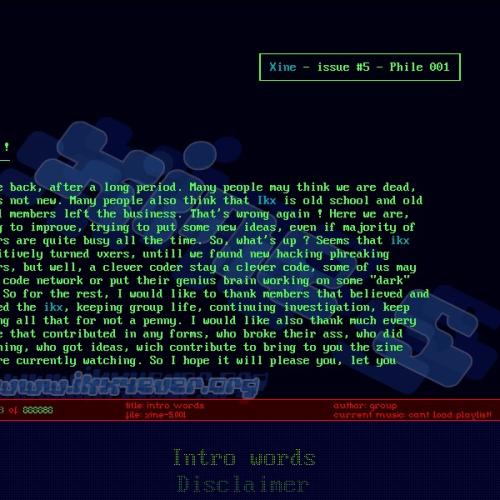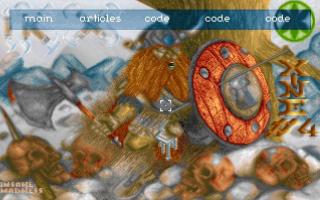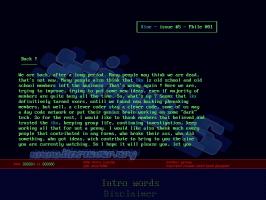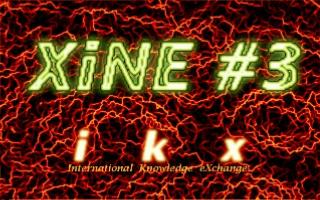Copy Link
Add to Bookmark
Report
xine-1.007

/-----------------------------\
| Xine - issue #1 - Phile 007 |
\-----------------------------/
...........................
.TBScan Heuristics Flags.
. b0z0/iKx .
.....................
a) Whassap?
-----------
TBScan is, from my point of view, one of the best heuristic scanners in
our days. The heuristic scanning based on small strings is very effective
versus new viruses, expecially ones with no encryption. I had a lot of
problems to fool TBScan heuristics flags, so i decided to write this
little article that describes any (or anyway the ones that may be a real
danger for our viruses) of those. The used TBScan is the 7.04 one.
I already saw two articles (but maybe that are other ones :) ) that
described this flags, but that are currently quite old and also some
flags (that were added lately) weren't covered or were covered just
partially. So here again to describe them :)
b) Here we go!
--------------
Finally here with the flags description.
With _seg_ want to say every segment register CS,DS,ES,SS.
With _reg_ every register and with _reg16_ every 16 bits register. With
_reg16l_ i think the low 8 bits of a 16 bits register and with _reg16h_
the 8 high ones. Finally _imm8_ means an immediate 8bit value and _imm16_
means an immediate 16bit value.
Pay attention, the precedence of some operations generally isn't
important, but sometimes is :) So a:
mov ax,1a00h
mov dx,80h
int 21h
will cause a flag in the same manner as a:
mov dx,80h
mov ax,1a00h
int 21h
The flags will be also triggered if between the suspect passages there
is some junk or code that doesn't do anything important. So:
mov dx,80h
sub cx,cx ;doesn't infect dx
mov ax,1a00h
inc ax ;
dec ax ;ax is the same at the end
int 21h
will be triggered at the same manner like the precedent ones.
Also:
mov dx,80h
mov ax,1a00h
add ax,0f0f0h
int 21h
will trigger the flag, non considering the value of the register AX at
the call of the int :)) Anyway we will talk a little more about this after
the flags.
c) The flags!
-------------
<------------------------------------------
* -F- Suspicious file access.
mov ax,4301h ; Set file attributes int 21h call
int 21h ;
or ;
mov ax,5701h ; Set file time/date int 21h call
int 21h ;
or ;
mov cx,03 ;or also 04 ; Write 3 (or 4) bytes to the file.
mov ah,40h ; used in com infectors.
int 21h ;
or ;
mov cx,1ch ; Write 1ch bytes to the file.
mov ah,40h ; Used in EXE infectors to rewrite
int 21h ; the new header.
or ;
mov ax,1a00h ;
mov dx,80h ; set DTA. Used in runtime viruses
int 21h ;
or ;
mov ah,1ah ; again set DTA to ds:80h
mov dx,80h ;
int 21h ;
or ;
mov ah,4eh ; findfirst file function
int 21h ;
<------------------------------------------
* -M- Memory resident code.
mov ax,2521h ; Set Int21h int 21h call.
int 21h ;
or ;
mov ax,2513h ; Set Int13h int 21h call.
int 21h ;
or ;
mov ax,2508h ; Set Int08h int 21h call.
or ;
mov word ptr _seg_:[86h],_seg_ ;direct int21h man. (just segment)
or ;
mov word ptr _seg_:[4eh],_seg_ ;direct int13h man. (just segment)
or ;
mov word ptr _seg_:[22h],_seg_ ;direct int08h man. (just segment)
or ;
lds _reg16_,_seg_:[84h] ; for int 21h
or ;
lds _reg16_,_seg_:[4ch] ; for int 13h
or ;
les _reg16_,_seg_:[84h] ; again for 21h
or ;
les _reg16_,_seg_:[4ch] ; again for 13h
<--------------------------------------------
* -O- Found code that can be used to overwrite/move a program in memory
mov di,0100h ; Very used when restoring original
; COM file bytes or just when copying
; our virus in memory. But may be also
; used accidentally.
<--------------------------------------------
* -t- Program contains a time or date triggered event.
mov ah,2ah ; Get system time int 21h call
int 21h ;
or ;
int 1ah ; Get time from BIOS
<--------------------------------------------
* -X- Stealth capabilities.
cmp ah,11h ; only if both are founded in a file at the same
cmp ah,12h ; time the flag will be triggered. this two cmps
or ; are generally used for the stealth on the dir
; DOS command
mov al,_imm8_ ; used as an antidebug tech
out 21h,al ; kbd
or ;
mov ah,13h ; get/set dos disk int handler
int 2fh ;
or ;
mov ax,13xxh ;
int 2fh ;
or ;
mov ax,12yyh ; when yy in both cases is a value between 00 and
int 2fh ; 20.
or ;
mov ah,12h ;
mov al,yyh ;
int 2fh ;
or ;
mov ax,0fa01h ; Disable VSafe
int 16h ;
or ;
mov ah,0fah ; again
mov al,01h ;
int 16h ;
or ;
mov _reg16_,0fa01h ; the same but passing trought another register
xchg ax,_reg16_ ;
int 16h ;
or ;
mov _reg16h_,0fah ;
mov _reg16l_,01h ;
xchg ax,_reg16_ ;
int 16h ;
<---------------------------------------------
* -Z- EXE/COM determination
cmp word ptr _seg_:some_data,'ZM' ; check somewhere in the mem
; where we copied the first few
; bytes of the file that is going
; to be infected if it seems to be
; an EXE file
or ;
cmp _reg16_,'ZM' ; same as the other but in another
; way from a register, 16b of
or ; course
cmp word ptr _seg_:[_reg16_],'ZM' ; well, here the _reg16_ may only
; be BX/DI/SI of course.
<----------------------------------------------
* -E- Flexible Entry-point
call doff ; if a POP is founded after a CALL and there
doff: pop _reg16_ ; wasn't a PUSH before the flag will be
; triggered. between the CALL and the POP
; there may be also a lot of other code.
; this is used to find the code delta offset.
<----------------------------------------------
* -S- Contains a routine to search for executable files.
exemask db '*.ex' ; quite obvisious. there is a mask that
or ; may be used to search for files to be
commask db '*.co' ; infected. generally only present in
; runtime viruses
<----------------------------------------------
* -D- Disk Write access.
int 26h ; this is the absolute disk write int, so
or ; it is obvisious why the flag is set :)
mov ah,03h ; or anyway also using disk write of the
int 13h ; int 13h will give an alarm.
or ;
mov ax,03??h ;
int 13h ;
or ;
mov sp,7c00h ; this is a tipical way to change the
; stack pointer in boot infectors so it
; wouldn't write on the virus code. the
; interesting thing is that the flag isn't triggered if
; this MOV is founded in the boot sector but only if
; founded on files...
<----------------------------------------------
* -A- Suspicious Memory Allocation.
cmp byte ptr _seg_:[0],'Z' ; used when testing if we reached the
or ; last MCB
sub word ptr _seg_:[3],_imm16_ ; shrink the MCB
or ;
mov word ptr _seg_:[3],ax ; change the length of the MCB to the AX
or ; value
mov word ptr _seg_:[413h],ax ; change avaiable memory
or ;
mov ax,word ptr _seg_:[413h] ; get mem size
or ;
sub word ptr _seg_:[413h],_imm16_ ; reduce memory
or ;
int 12h ; get amount of memory and prepare CL to
mov cl,_imm8_ ; be used to shift AX for some times
<----------------------------------------------
* -K- Unusual stack.
This flag is generally set in all the EXE infectors. The flag is set
because in the header the stack pointer points a lot after the executable
code.
<----------------------------------------------
* -1- Found instructions which require a 80186 processor or above.
This is set when a non 8088 instruction is founded, ie.: LEAVE
<----------------------------------------------
* -L- The program traps the loading of software.
cmp ah,4bh ; if a compare of the AX register with
jmp somewhere ; the 4b00h (load and execute) or a cmp
or ; of the AH with the 4bh is founded before
cmp ax,4b00h ; a jump (indifferently which) the flag
jmp somewhere ; is triggered. this code is usually used
; in interrupt 21h handlers.
<----------------------------------------------
* -B- Back to entry point.
mov _reg16_,0100h ; this is typically used when we want to
jmp _reg16_ ; give again the control to the victim
or ; file in COM infections.
mov _reg16_,0100h ; just the same
push _reg16_ ;
ret ;
<----------------------------------------------
* -N- Wrong name extension
The file is an EXE but the extension is .COM or the file is a COM but has
an EXE extension.
<----------------------------------------------
* -?- Inconsistent exe-header.
The header is inconsistent. This may occour with a COM file that has the
first two bytes equal to 'MZ', so TBSCAN will first think it is an EXE,
but then he will found an inconsistence in the "header". This flag may
also occour if the file size calculated from the header is bigger than
the real file on the disk.
<----------------------------------------------
* -U- Undocumented interrupt/DOS call.
This flag is set then a strange interrupt or a strange dos system call is
used.
<----------------------------------------------
* -#- Found a code decrytion routine or debugger trap
loopy: mov [_reg16_],_reg_ ; this flag is set when a
dec _reg_ ; loop of some instructions
; that changes something in
jnz loopy ; memory. also a counter or
or ; something like must occour
ourloop: xor word ptr _seg_:[_reg16_],_reg16_ ; to give more
inc _reg16_ ; credibility to the loop :)
loop ourloop ; if we are using loop then TBScan
; will check what is in the CX
; register. If the value is greater of 10h
; then the flag will be triggered. The same thing occours
; if we use another register as a counter (let's say DX)
; and we decrement it and then check for the desired
; condition (ie. if it is zero). If we don't define DX or
or ; if DX is greater than 10h then the flag will be
; triggered. Then if we use a two layer encryption, when
; the first encrypts (of course if it doesn't trigger
; accidently other flags such as "D" or "U", because for
; the user 11 flags are the same as 10 :) ) the entire
; virus body (or file or something else) and the second,
; which will be unencrypted, encrypt just the other
; decryption loop (of course <= 10h) then TBscan wouldn't
; pay attention to it at all.
mov ax,2501h ; this sets the Int 01h handler to another
int 21h ; routine. This may be used to crash some
or ; debuggers
mov word ptr _seg_:[06h],_seg_ ; manipulate Int 01h segment
<----------------------------------------------
* -R- Relocator.
rep _movs instr_ ; the flag will be se if a rep of a movs
retf ; instruction (movsb, movsw, movsd) is founded
; *near the start* (or anyway is called
; from somewhere at the start). this may seems
or ; that the program copies itself somewhere
; and then uses a RETF (a push may be
; present to have a real effect) to jump
; somewhere else for example to the newly
; copied code.
push _reg16_ ; here we push a register (with a memory
ret ; location for example) and jump to it
; with a ret
or ;
push _imm16_ ; we just push a immediate (a mem loc
ret ; maybe) and then return there with a ret
or ;
sub sp,_imm16_ ; this may occour if we put our location
ret ; in the stack and then we want to jump
or ; there with the ret
sub sp,_reg16_ ; again... attention, _reg16_ must be
ret ; inizialized somewhere to trigger the
or ; flag.
add sp,_imm16_ ; this is basically the same as the
ret ; precedent
or ;
add sp,_reg16_ ; another one
ret ;
or ;
inc sp ; also more than one inc. identic to the
ret ; add one
or ;
dec sp ; again
ret ;
or ;
mov sp,_imm16_ ; move SP somewhere where we may store the
ret ; adress where we want to jump with this
or ; ret
shr sp,_imm16_ ; yet another R flag :) _imm16_ has a max
ret ; value.
or ;
shl sp,_imm16_ ;
ret ;
or ;
neg sp ; if we put our return value on ss:neg(sp)
ret ;
; so basically the R flag is triggered
; everytime that the SP is modified before a call. The
; flag will be also triggered for example if we call a
; procedure (which will change our CS:IP), then we POP
; more times than PUSH, so the SP at the RET wouldn't be
; the same as it has been at CALL time.
<----------------------------------------------
* -!- Invalid opcode or out-of-range branch.
This occours when a invalid opcode (such as 66h for example) is founded
or if a jump of the code point somewhere out of it.
<----------------------------------------------
* -G- Garbage instructions.
this flag is triggered if there is one of this operations but before it
in the registers it seems that there isn't anything logical into them. If
a MOV to a register is encountered before the operation (also if the MOV
is into another register, not the used one) the flag would not be
triggered! TBScan put the G flag only if any of this instruction is
founded (without a MOV initialisation) in the first few bytes (about 30).
AAA
AAS
ADD _reg_,_reg_
ADD _reg_,_imm_
ADC _reg_,_reg_
ADC _reg_,_imm_
AND _reg_,_reg_
AND _reg_,_imm_
CBW
CWD
CLC
CMP _reg_,_reg_
DAA
DAS
DEC _reg16_
INC _reg16_
OR _reg_,_reg_
OR _reg_,_imm_
POPF
STC
XCHG _reg16_,_reg16_
XOR _reg16_,_reg16_
XOR _reg16_,_imm_
<----------------------------------------------
* -@- Encountered instructions which are not likely to be generated by an
assembler, but by some code generator like a polymorphic virus.
This is triggered when a strange operation, quite unused, is encountered.
Some examples of stange operations may be:
HLT
AAA
<----------------------------------------------
* -J- Suspicious jump construct.
This flag is triggered when a jump that points on another jump
somewhere in the code is founded near the entry point of the program.
For example:
start:
jmp foolit
i_am_back:
.
. ;
. ; here is some data/code
. ;
.
foolit:
jmp i_am_back
d) Flags on boot sectors
------------------------
TBScan is very unfriendly with tipical boot sector viruses :) Infact even
only a "413h" in the boot sector will trigger two flags, the A and the M
ones.
For example:
mov _reg16_,word ptr _seg_:[413h] ; trigger flags AM
dec word ptr _seg_:[413h] ; trigger flags AM
but also a
db 90h,13h,04h,90h
trigger 2 flags in a row :) so pay attention when allocating memory!
TBScan of course doesn't use the same search strings as for files when
scanning boot sectors. Let's give a look to the suspicious instructions
that we can't use in our BS viruses:
mov ax,3xx ; Write xx sectors will trigger the D flag
int 13h ;
;
mov cx,_imm16_ ; this will trigger the O flag. this may
rep movsb ; be a piece of a routine which is used to
; copy our virus in memory or something
; like.
;
mov cx,_imm16_ ; again the O flag.
rep movsw ;
;
mov word ptr _seg_:[004eh],_seg_ ; put our segment instead of the
; original segment of the int13h. this
; will trigger A and M flags
mov word ptr _seg_:[004ch],_reg16_ ; put offset of our handler
; instead of the original one. this will
; trigger A and M flags
mov word ptr _seg_:[004ch],_imm16_ ; set new int13h offset
; trigger A and M flags
mov word ptr _seg_:[004eh],_imm16_ ; set new int13h segment
; trigger A and M flags
int 12h ; get amount of memory
; this will trigger the A flag.
int 1ah ; will trigger the 't' flag also here
;
Well, as in the files viriis also in boot sectors strange calls will be
flagged with the U flag.
And finally if the BS/MBR marker 55aah isn't present TBScan will trigger
the Y flag.
e) Fooling the flags
--------------------
For almost any of the described flags the way to fool them is to do the
same operation in another way. For example:
Triggered: Not Triggered:
cmp ah,4bh ; push bx
je somewhere ; mov bh,4bh
; cmp ah,bh
; je somewhere
; pop bx
This example gives you an idea of how you can fool almost any of the
flags. Of course the resulting code wouldn't be pretty and short like the
original one, but it won't be flagged. Anyway there are many ways to
change in this way the code, and some are also quite efficent and
optimized, so just have a little of imagination or don't cry if TBScan
catches your virus :)




















